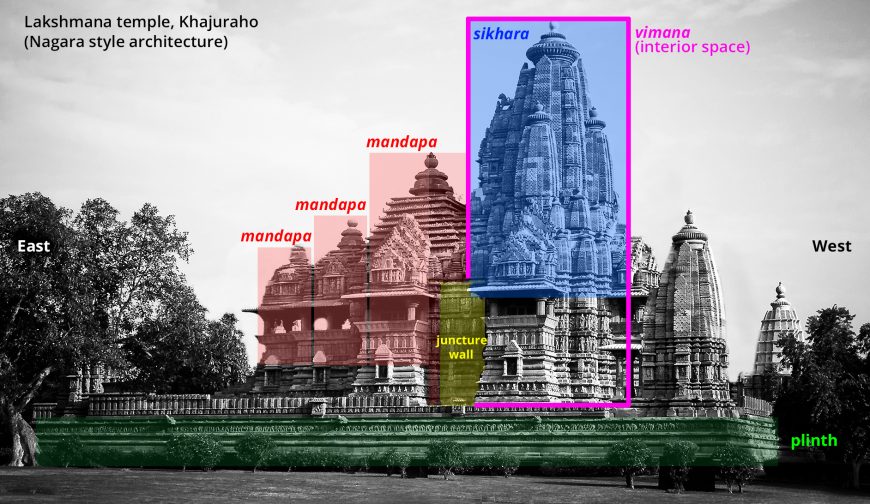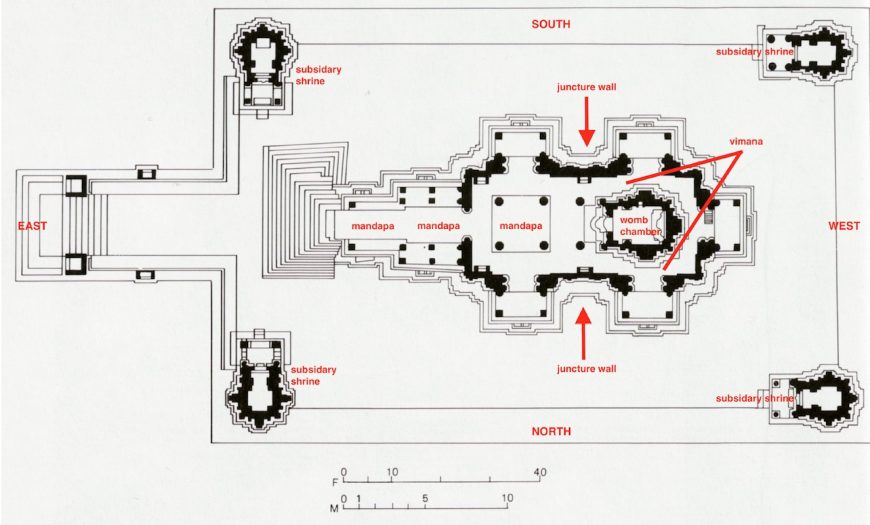
Sculpture of a woman removing a thorn from her foot, northwest side exterior wall, Lakshmana temple, Khajuraho, Chhatarpur District, Madhya Pradesh, India, dedicated 954 C.E. (photo: Monument hunter, CC BY-SA 4.0)
Ideal female beauty
Look closely at the image to the left. Imagine an elegant woman walks barefoot along a path accompanied by her attendant. She steps on a thorn and turns—adeptly bending her left leg, twisting her body, and arching her back—to point out the thorn and ask her attendant’s help in removing it. As she turns the viewer sees her face: it is round like the full moon with a slender nose, plump lips, arched eyebrows, and eyes shaped like lotus petals. While her right hand points to the thorn in her foot, her left hand raises in a gesture of reassurance.
Images of beautiful women like this one from the northwest exterior wall of the Lakshmana Temple at Khajuraho in India have captivated viewers for centuries. Depicting idealized female beauty was important for temple architecture and considered auspicious, even protective. Texts written for temple builders describe different “types” of women to include within a temple’s sculptural program, and emphasize their roles as symbols of fertility, growth, and prosperity. Additionally, images of loving couples known as mithuna appear on the Lakshmana temple as symbols of divine union and moksha, the final release from samsara. [1]
The temples at Khajuraho, including the Lakshmana temple, have become famous for these amorous images—variations of which graphically depict figures engaged in sexual intercourse. These erotic images were not intended to be titillating or provocative, but instead served ritual and symbolic function significant to the builders, patrons, and devotees of these captivating structures. [2]
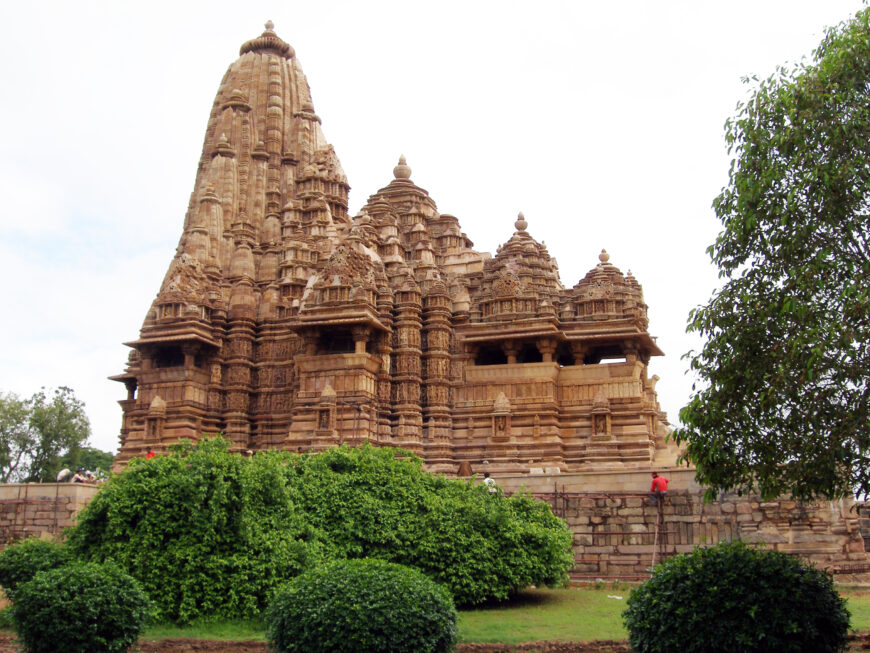
Lakshmana temple, Khajuraho, Chhatarpur District, Madhya Pradesh, India, dedicated 954 C.E. (Chandella period), sandstone (photo: China Crisis, CC BY-SA 3.0)
Chandella rule at Khajuraho
The Lakshmana temple was the first of several temples built by the Chandella kings in their newly-created capital of Khajuraho. Between the 10th and 13th centuries, the Chandellas patronized artists, poets, and performers, and built irrigation systems, palaces, and numerous temples out of sandstone. At one time over 80 temples existed at this site, including several Hindu temples dedicated to the gods Shiva, Vishnu, and Surya. [3] There were also temples built to honor the divine teachers of Jainism. Approximately 30 temples remain at Khajuraho today.
The original patron of the Lakshmana temple was a leader of the Chandella clan, Yashovarman, who gained control over territories in the Bundelkhand region of central India that was once part of the larger Pratihara Dynasty. Yashovarman sought to build a temple to legitimize his rule over these territories, though he died before it was finished. His son Dhanga completed the work and dedicated the temple in 954 C.E.
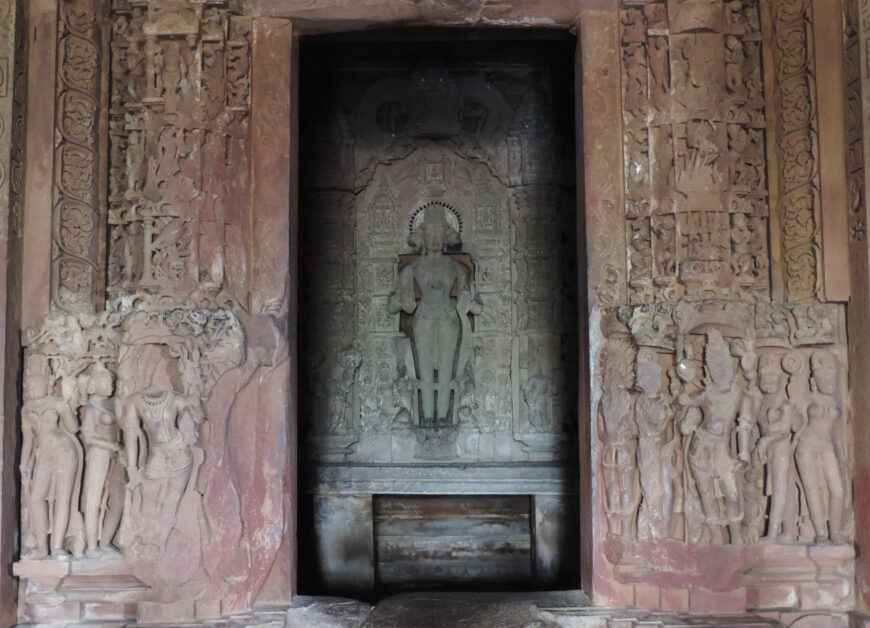
Vaikuntha Vishnu, womb chamber (garba griha), Lakshmana temple. 1076–1099 C.E., sandstone (photo: Christine Chauvin, CC BY-NC-ND 2.0)
Nagara style architecture
The central deity at the Lakshmana temple is an image of Vishnu in his three-headed form known as Vaikuntha who sits inside the temple’s inner womb chamber also known as garba griha—an architectural feature at the heart of all Hindu temples regardless of size or location. [4] The womb chamber is the symbolic and physical core of the temple’s shrine. It is dark, windowless, and designed for intimate, individualized worship of the divine—quite different from large congregational worshipping spaces that characterize many Christian churches and Muslim mosques.
The Lakshmana Temple is an excellent example of Nagara style Hindu temple architecture. [5] In its most basic form, a Nagara temple consists of a shrine known as vimana and a flat-roofed entry porch known as mandapa. The shrine of Nagara temples include a base platform and a large superstructure known as sikhara sikhara, which viewers can see from a distance. [6] The Lakshmana temple’s superstructure appear like the many rising peaks of a mountain range.
Approaching the divine
Devotees approach the Lakshamana temple from the east and walk around its entirety—an activity known as circumambulation. They begin walking along the large plinth of the temple’s base, moving in a clockwise direction starting from the left of the stairs. Sculpted friezes along the plinth depict images of daily life, love, and war and many recall historical events of the Chandella period.
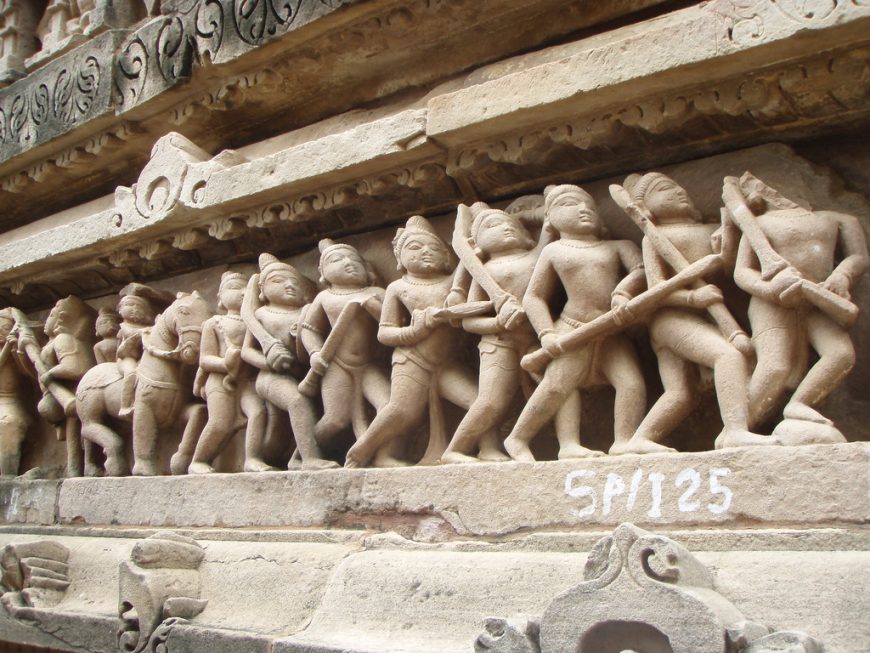
Section of a narrative frieze encircling the temple at the level of the plinth, Lakshmana temple, Khajuraho, Chhatarpur District, Madhya Pradesh, India, dedicated 954 (photo: Sheep”R”Us, CC BY-NC-ND 2.0) View in Google Street View
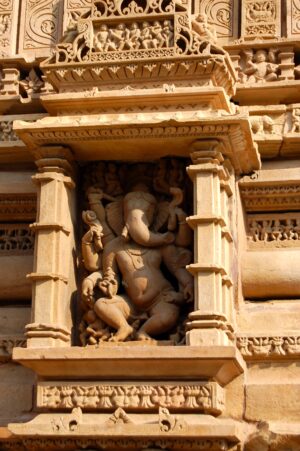
Ganesha in niche, exterior mandapa wall, south side, Lakshmana temple, Khajuraho, Chhatarpur District, Madhya Pradesh, India, dedicated 954 (photo: Manuel Menal, CC BY-SA 2.0) View in Google Street View
Devotees then climb the stairs of the plinth, and encounter another set of images, including deities sculpted within niches on the exterior wall of the temple.
In one niche the elephant-headed Ganesha appears. His presence suggests that devotees are moving in the correct direction for circumambulation, as Ganesha is a god typically worshipped at the start of things.
Other sculpted forms appear nearby in lively, active postures: swaying hips, bent arms, and tilted heads which create a dramatic “triple-bend” contrapposto pose, all carved in deep relief emphasizing their three-dimensionality. It is here —specifically on the exterior juncture wall between the vimana and the mandapa (see diagram above)—where devotees encounter erotic images of couples embraced in sexual union (see image below). This place of architectural juncture serves a symbolic function as the joining of the vimana and mandapa, accentuated by the depiction of “joined” couples.
Four smaller, subsidiary shrines sit at each corner of the plinth. These shrines appear like miniature temples with their own vimanas, sikharas, mandapas, and womb chambers with images of deities, originally other forms or avatars of Vishnu.
Following circumambulation of the exterior of the temple, devotees encounter three mandapas, which prepare them for entering the vimana. Each mandapa has a pyramidal-shaped roof that increases in size as devotees move from east to west.
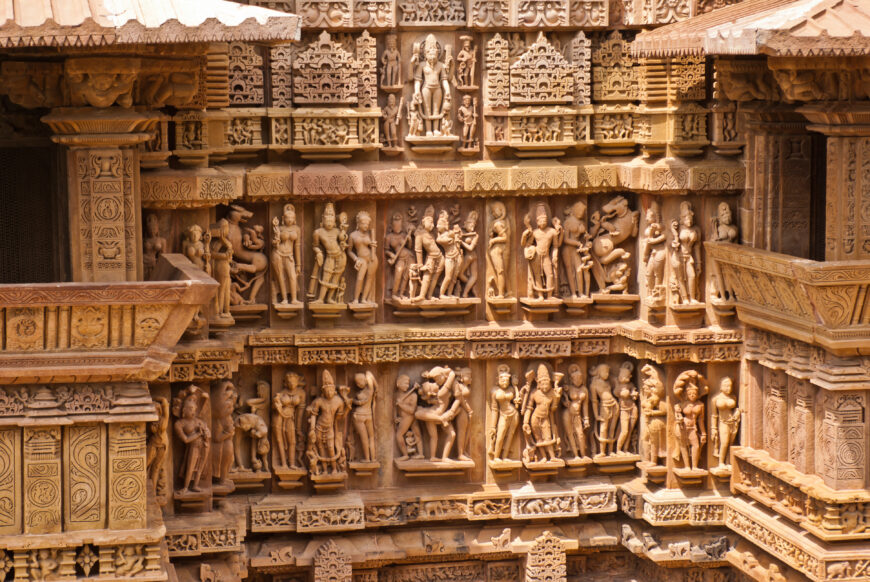
Figural groupings on the temple exterior including Shiva, Mithuna, and erotic couples, Lakshmana temple, Khajuraho, Chhatarpur District, Madhya Pradesh, India, dedicated 954 (photo: Antoine Taveneaux, CC BY-SA 3.0). View in Google Street View
Once devotees pass through the third and final mandapa they find an enclosed passage along the wall of the shrine, allowing them to circumambulate this sacred structure in a clockwise direction. The act of circumambulation, of moving around the various components of the temple, allow devotees to physically experience this sacred space and with it the body of the divine.
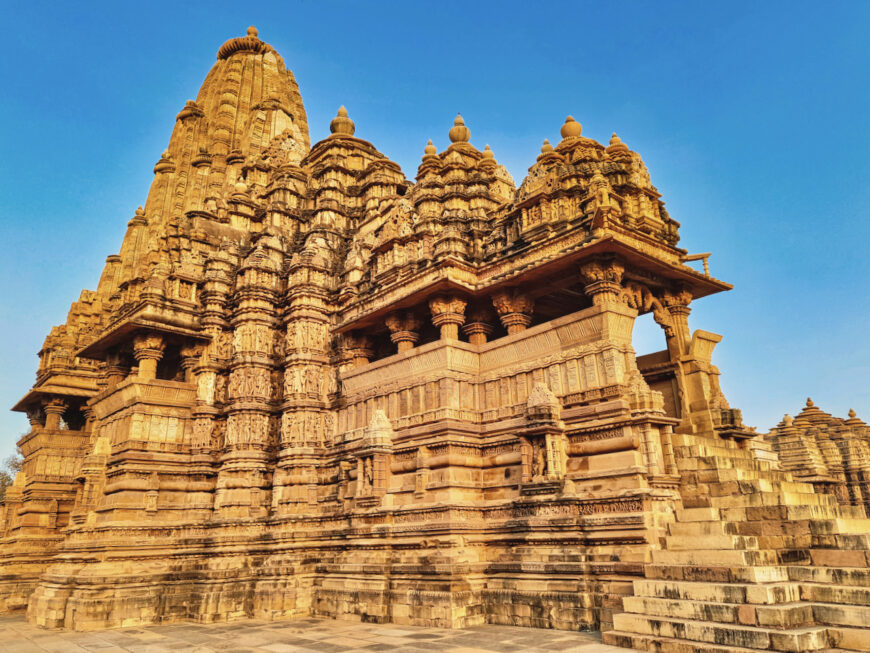
Entrance to the Mandapa, Lakshmana Temple, Khajuraho, Chhatarpur District, Madhya Pradesh, India, dedicated 954 (photo: Ms Sarah Welch, CC0 1.0)



